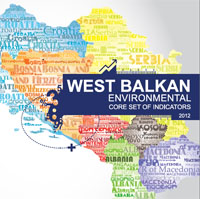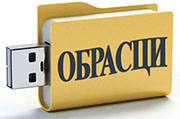| EMMISSION OF THE MAIN POLLUTING SUBSTANCES – CARBON MONOXIDE (CO) |
The indicator tracks the trends incarbon monoxide (CO).
kt (kilotons per year)
What progress has been made in overall reduction of emissions of carbon monoxide in the Republic of Macedonia?
In 1990, the total national emissions of CO amounted to 132,4 kt. For comparison, in 2016 emissions are reduced by 44% to amount 74 kt. The reduction of CO emissions in 2001 is also noticeable compared to 2000. From 2001 to 2012 the trend does not show significant changes except certain smaller fluctuations. Significant reduction of CO emissions is recorded in 2013 and a further reduction in 2014 and 2015. Compared to 2015, a further significant downward trend is observed in 2016by 14%.
The Diagram below shows annual trend in the emissions of carbon monoxide for the period 1990 to 2016.
Diagram 1.Trend in emissions of carbon monoxide (CO)
Under the CARDS Programme, Inventory of air emissions of the main pollutants in the country was established in 2005 in accordance with the EMEP methodology by individual sectors, i.e. activities, and in 2014 an Inventory including all pollutants was prepared.Starting from 2014, the Republic of Macedonia carries out calculations of national emissions for all pollutants.
The emission sources, within this national indicator, are made according to the following categorization:
| Sector |
| Energy Production and distribution |
| Commercial, instiucional and households |
| Industry (combustion) |
| Industry (production) |
| Fugitive emissions |
| Use of solvents and products |
| Road transport |
| Non-Road transport |
| Waste |
| Agriculture |
| Other |
The largest source of emissions of CO is the sector Commercial, institutional and household with a share of 64.8%. Then follows the sector Road transport with a share of 16.7%, while the sectors Industry (Combustion), Non-road traffic and Waste participate with share of 5.9%, 5.9% and 4.2%, respectively, in the total CO emissions . The remaining sectors are insignificant sources of carbon monoxide.
Diagram 2. Emissions of CO by sectors in 2016
Which different sectors and processes contribute to carbon monoxide emissions?
A significant proportion (part) of all CO emissions come mainly from the NFR category 1A4 – Other sectors (primarily household heating) with a share of 67%, while the NFR categories 1A3 – Transport (road transport) and 1A2 – Combustion in manufacturing industries and construction are participating with share of 17% and 9%, respectively, in total CO. The graph below shows a reduction in total CO emissions in 2001 compared to 2000, attributable to the lower fuel consumption in the NFR category 1A4 – Other sectors (primarily household heating). The reason for emission reduction in the period 2010-2013 compared to the previous years, is mainly found in the reduced emissions from the sector 1A3 – Transport (road transport). From 2014 to 2016, there is further reduction of total CO emissions, mainly due to reduction of emissions from NFR categories 1A4 – Other sectors (primarily household heating) and 1A3 – Transport (road transport).
Diagram 3. Emissions of CO by NFR sectors per year
 Data coverage: excel_1, excel_2
Data coverage: excel_1, excel_2
Sources of data: The data used refers to overall national emissions and emissions categorized by NFR delivered by EEA member and collaborating states to EEA and Secretariat of the United Nations. Data is accessible per country on the following web address: http://cdr.eionet.europa.eu/mk/un/clrtap/inventories/envwovm7g/.
- Methodology for indicator calculation
The methodology for this indicator calculation is based on calculated national emissions and emissions by NFR sectors of this pollutant as reported to EEA (European Environmental Agency) and UNECE/EMEP (United Nations Economic Commission for Europe/Cooperative programme for monitoring and evaluation for transboundary air pollution transfer under the Convention on Transboundary Air Pollution Transfer) in February 2016. Data used in this report is in accordance with the data submitted, the difference being that additional allocation of national emissions has been made apart from NFR (as sent to international organizations) also by SNAP.
Calculations are in line with the Guidebook of EMEP/EEA on air emissions inventory taking published in 2009, 2013 and 2016. The Guidebook contains emission factors which have been used in the calculations, except for the energy sector where calculations were made by use of country specific factors or use of data from the measurements completed in the period 2008-2016 for this polluting substance, for the sector 1A1a concerning electricity and heat producing plants.
Methodology used for calculation and presentation of this indicator is given in EMEP/EEA Guidebook for inventory of air pollutant emissions of 2009, Guidebook of 2013 and Guidebook of 2016 which may be accessed at the following links (http://www.eea.europa.eu/publications/emep-eea-emission-inventory-guidebook-2009, http://www.eea.europa.eu/publications/emep-eea-emission-inventory-guidebook-2013 and http://www.eea.europa.eu/publications/emep-eea-guidebook-20136).
Action Plan for European Partnership, as well as National Plan for approximation of the national legislation with European regulations specifying bylaws that need to be prepared have been adopted.
The National Environmental Action Plan (NEAP II) was adopted. It contains the measures that need to be taken to improve the overall status of air quality, including the reduction of emissions of acidifying substances. The National Plan for Ambient Air Protection for the period 2012 to 2017 specifying the measures for air protection on national level and the National Programme for gradual air emissions reduction by 2020 have been adopted in order to define and implement measures on national level.
Does any of the national documents set target or target should be achieved in accordance with other international documents?
National strategic documents listed as references in the above text provide guidelines and specify actions that should be undertaken as a matter of priority. It is important to mention thatbylaws have been prepared in the area of air emissions transposing Directives 96/61/EC, 2000/81/EC, 2000/76/EC, 99/13/EC and 2001/81/EC, ranging between 90 and 100%.
In accordance with the requirements of the UNECE Convention on Long-Range Transboundary Air Pollution, inventory based on EMEP/EEA Guidebook for inventory of polluting substances into the air, setting the target of regular inventory of pollutants in tons per year following the n-2 principle, where n is the current year.
In relation to this polluting substance, the limit values for air quality are set in a bylaw in compliance with the Framework Air Directive 2008/50/EC, while limit values for air emissions are set in a bylaw in compliance with Directives 2001/80/EC, 1999/13/EC and 2000/76/EC.
Legal basis
The Law on Ambient Air Quality adopted in August 2004 and amended several times afterwards (Official Gazette of RM no. 67/2004, 92/2007, 83/2009, 35/10, 47/11, 100/12, 163/2013,10/2015 и 146/2015) is framework law in the area of air. The goals of this Law include avoiding, prevention and reduction of harmful effects on human health and environment as a whole, prevention and abatement of pollutions leading to climate change, as well as provision of appropriate information on the quality of ambient air.
On the basis of the Law on Ambient Air Quality, 16 bylaws were prepared and adopted to introduce limit values for air quality and air emissions, methodology of air quality and air emissions monitoring, manner of preparation of planning documents for air protection against pollution, manner of informing the citizens and international organizations, etc.
In relation to this polluting substance, the limit values and thresholds of assessment compliance with the Framework Air Directive 2008/50/EC are prescribed in the following bylaws: Decree on the limit values for the levels and types of polluting substances in the ambient air and alert thresholds, deadlines for limit values achievement, margines of tolerance for the limit value, target value ands and long-term objectives and Rulebook on criteria, methods and procedures for ambient air quality assessment.
The limit values for air emissions for certain technological processes are set in the Rulebook on the limit values of permissible levels of emissions and types of polluting substances in waste gases and steams released from stationary sources in the air.
- Reporting obligations towards international agreements – UNECE-CLRTAP and ЕЕА
- Annual Report of Processed Data on Air Emissions
| Code | Title of the indicator | Compliance with CSI ЕЕА or other indicators | Classification by DPSIR | Type | Linkage with area | Frequency of publication | |
| MK NI 050 | Emissions of the main polluting substances – carbon monoxide (CO) | UNECE | A1/5 (Carbon monoxide emissions (total stationary and mobile sources))
A1/2 |
P | A |
|
annually |







































































